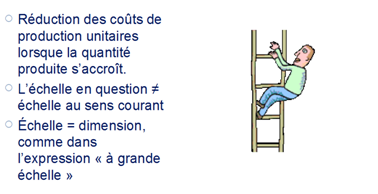TRADEWP7GE2200310 PAGE 3 UNITED E ECONOMIC AND SOCIAL COUNCIL
TRADEWP7GE2200310 PAGE 3 UNITED E ECONOMIC AND SOCIAL COUNCIL
UNITED
TRADE/WP.7/GE.2/2003/10
page
UNITED
E
Economic
and Social
Council


GENERAL
TRADE/WP.7/GE.2/2003/10
15 April 2003
Original: ENGLISH
 ECONOMIC
COMMISSION FOR EUROPE
ECONOMIC
COMMISSION FOR EUROPE
COMMITTEE FOR TRADE, INDUSTRY AND
ENTERPRISE DEVELOPMENT
Working Party on Agricultural Quality Standards
Specialized Section on Standardization of
Dry and Dried Produce (Fruit)
50th session, 24-27 June 2003, Geneva
Item 4(a) of the provisional agenda
REVISION OF THE STANDARD LAYOUT FOR
DRY AND DRIED FRUIT
DETERMINATION OF THE MOISTURE CONTENT FOR DRIED FRUIT
Transmitted by Spain
Note by the secretariat: The rapporteur (Spain) has prepared a new document which includes comments from other delegations. The document is based on an informal document (TRADE/WP.7/GE.2/2002/INF.5), which was distributed at the last session. Additions to that document are shown in bold/underlined and deletions are crossed out.
ANNEX I
DETERMINATION OF THE MOISTURE CONTENT FOR DRIED FRUITS
METHOD 1 - LABORATORY REFERENCE METHOD
1. Scope and application
This reference method serves to determine the moisture for dried fruits, as dried or desiccated apricots, figs, prunes, dates, grapes, apples, pears, etc.
2. Reference
This method is based on the method prescribed by AOAC: AOAC Official Method 934.06 - Moisture in Dried Fruits
3. Definition
Moisture content for dried fruits: conventionally, loss in mass measured under the operating conditions specified in AOAC Official Method 934.06. The moisture content is expressed as percentage by mass (grams per 100 grams).
4. Principle
Determination of the moisture content of a test portion by drying in an oven 6 h at 70 ± 1º C under pressure < 100 mm Hg (13.3 kPa).
5. Apparatus (see AOAC Official Method 934.06)
5.1 Analytical balance sensitive to 1 mg or better.
5.2 Mechanical mill or food chopper
5.3 Non-corrosive metal dish, provided with well-fitting lid, about 8.5 cm of diameter, allowing the test portion to be spread to about 0.2 g/cm2 or less.
5.4 Electric vacuum oven with thermostatic control capable of being regulated in normal operation at 70 ± 1º C under pressure < 100 mm Hg (13.3 kPa.).
5.6 Desiccator containing an effective desiccant.
5.7 Steam-bath
6. Procedure
Follow the operating conditions as specified in AOAC Official Method 934.06 for Moisture in Dried Fruits, with the following additional specifications, concerning the preparation of the test sample:
Homogenize the laboratory sample and take a minimum of 100 g of dried fruits as a test sample. With non-pitted stone fruits (apricots, prunes, peaches, dates, etc), remove the stones using the rest as a test sample.
Grind or chop the test sample to obtain small particles, using either a mechanical mill or food chopper, without overheating the product, or cut and grind by hand if necessary, using knife, scissors, mortar and pestle or similar.
Use 5.0 to 10 g of the ground or chopped product as a test portion. Mix the test portion with circa 2 g of finely divided glass fiber filter or of washed sand, with the help of a spatula, and weigh to nearest 0,01 g.
When
necessary, moisten the test portion sand with a few milliliters of
hot water, mix the test portion with circa 2 g finely divided glass
fiber filter or with washed sand, with the help of a spatula, and
heat the open dish on the steam-bath to near dryness, before complete
the drying in the vacuum oven.
When necessary, moisten the test portion and the glass fiber filter or the washed sand with a few milliliters of hot water, mix thoroughly with the help of the spatula, and heat the open dish on the steam-bath to near dryness, before complete the drying in the vacuum oven.
Carry out two determinations on the same test sample.
7. Expression of results and test report
The moisture content, W, as percentage by mass of the sample (grams per 100 grams), is equal to:
M1 - M0
W = ------------ x 100
M1 - M2
where
M0 is the mass, in grams, of the dish and lid. 1, 2, 3
M1 is the mass, in grams, of the dish and lid, and the test portion before drying. 1, 2
M1 is the mass, in grams, of the dish and lid, and the test portion after drying. 1, 2
Take as a result the arithmetic mean of the results of the two determinations, if the difference between the results is smaller than 0.2%. The result has to be reported to one decimal place.
The test report shall show the method used and the results obtained. It shall mention any operating details not specified or optional, and incidents, likely to have influenced the results. It shall also include all the information necessary for the complete identification of the sample.
8. Repeatability
The difference between the results of two determinations carried out simultaneously or in rapid succession by the same analyst, using the same apparatus and in the same laboratory, should not be greater than 0.2 g of moisture per 100 g of sample.
METHOD 2: RAPID METHOD
1. Scope and application
This rapid method serves to determine the moisture for dried fruits. 4
2. Reference
This method is based on the method prescribed by AOAC: AOAC Official Method 972.20 - Moisture in Prunes and Raisins (Moisture Meter Method). This method is also commonly used as unofficial method for the determination of moisture content in other kinds of dried fruits.
3. Definition
Moisture content for dried fruits: conventionally, correlation between moisture content and conductance-temperature measured under the operating conditions specified in AOAC Official Method 972.20. The moisture content is expressed as percentage by mass (grams per 100 grams).
4. Principle
Determination of the conductance and temperature of a test portion by the moisture tester meter and under the operating conditions specified in AOAC Official Method 972.20. The moisture tester meter has to be calibrated according to the laboratory method, for each kind of dried fruit, taken into account the variety or commercial type and the type of presentation (whole, pitted, slabs, dices, etc) and, when necessary, the crop year and/or the origin.
5. Apparatus (see AOAC Official Method 972.20)
5.1 Moisture tester meter type A series
5.2 Thermometer (if not incorporated to the moisture tester meter)
5.3 Mechanical mill or food chopper
6. Procedure
Follow the operating conditions as specified in AOAC Official Method 972.20 - Moisture in Prunes and Raisins (Moisture Meter Method).
Carry out the determination on two test portions
7. Expression of results and test report
7.1 Result
The result should be the arithmetic mean of the two determinations. Report the result to one decimal place.
7.2 Test report
The test report must state the method used and the results obtained. The report must contain all the information necessary for the complete identification of the sample.
1
Weigh to the nearest 0.001 g. 0,01
g.
2 In case, plus the glass fibre or washed sand, and spatula
3 After heating on the oven for 2 hours and cooling in the desiccator
4 It is also possible to employ other rapid methods based on different conductance methods, or on the principle of loss of mass by heating with apparatus including an halogen or infra-red lamp and a built-in analytical balance, always at condition that the method and the apparatus has to be calibrated according the laboratory method.
Tags: council nations, council, united, economic, social, tradewp7ge2200310
- SESION DEL GOBIERNO DEL DIA 13 DE JUNIO DE
- GALWAY FILM CENTRE & RTÉ SHORT FILM COMMISSION APPLICATION
- FINAL 31809 BATH AND NORTH EAST SOMERSET COUNCIL INCAPABILITY
- ÉRASE UNA VEZ UN PUEBLO PERDIDO ENTRE LAS MONTAÑAS
- MM011 UCT GOODS RETURN NOTE A INSTRUCTIONS
- UMOWA NR …………………… W SPRAWIE PODNOSZENIA KWALIFIKACJI ZAWODOWYCH PRZEZ
- EGE ÜNIVERSITESI TIP FAKÜLTESI ENDÜSTRI DESTEKLI ARAŞTIRMALAR BÜTÇE FORMU
- UMOWA UCZESTNICTWA W KONFERENCJI W RAMACH PROJEKTU PT „CENTRAL
- Pravidla Psaní Čárek ve Španělštině (ortografía 2010) i
- DİPLOMA YÖNERGESİ (ÖNLİSANSLİSANSYÜKSEK LİSANSDOKTORA) AMAÇ VE KAPSAM MADDE 1
- Agents Certification and Acceptance of Authority i (insert
- LIFE PREINTERMEDIATE READING TEXT PAGE 39 UNIT 3 THE
- ZAHTEVANO ZNANJE ZA POSAMEZNE OCENE PRI PREDMETU MATEMATIKA S
- SCIENCE IN MOTION JUNIATA COLLEGE VIEWING THE VISIBLE SPECTRUM
- PREPARADO POR DANIEL COMARAZAMY GRUPO DE ESTABILIDAD ESTRUCTURAL (GE2INTEC)
- OBAVIJEST O POSTOJANJU SUKOBA INTERESA SUKLADNO ČLANKU 80 ZAKONA
- PLAN TERRITORIAL PARCIAL LURRALDE ZATIKO PLANA MONDRAGÓN BERGARA
- OGLEDNI PRIMJERCI AKTA O OSNIVANJU I STATUTA ZAKLADE OGLEDNI
- HTA IN DEVELOPING COUNTRIES CURRENT STATUS CHALLENGES AND OPPORTUNITIES
- Aprobat Primar Cerere Pentru Acordarea Alocatiei Pentru Copiii Nounascuti
- Č J …… POČET LISTŮ DOKUMENTU 3 ZN ………
- ATTACHMENT 411 INTERVIEW EVALUATION AND SCORING FORM FOR PROPOSALS
- BASES 13ª EDICIÓN PREMIOS “PONLE FRENO” CON LA INTENCIÓN
- RADIOACTIVE DECAY RADIOACTIVE DECAY RADIOACTIVE DECAY IS THE SPONTANEOUS
- KRYTERIA OCENIANIA Z PRZYRODY KL VI POZIOM KONIECZNY
- A TESTEK MOZGÁSA EMLÉKEZTETŐ 1 MIKOR MONDJUK HOGY MOZOG
- PROBLEMSET SOLUTIONS CHAPTER 13 460 UNSATURATED HYDROCARBONS CHAPTER 13
- 3GPP TSGSA WG6 MEETING 40E S6202084REV2 EMEETING 16TH –
- ESTIMATION OF THE NUMBER OF ACTIVE MYOSIN HEADS IN
- BUKU PETUNJUK PENGGUNAAN SIM KEUANGAN SAK VERSI 20
PHYSIK 9 REIBUNG 1 DATUM KLEBE DIESEN
MARCH 5 2007 MR LEWIS J FERNANDEZ ASSOCIATE CHIEF
AFRICA IN AMERICAN MEDIA A CONTENT ANALYSIS OF NEWSWEEK
CONTRATO ADMINISTRATIVO Nº 0012014 CONTRATO DE TRABALHO POR PRAZO
 HOW TO MAKE A HOME MADE FIX PROCEDURE TO
HOW TO MAKE A HOME MADE FIX PROCEDURE TOCAPITULO I PLANILLA Nº 18 (CONT) ADMINISTRACION NACIONAL DETALLE
 10 THINGS MEN CAN DO TO PREVENT GENDER VIOLENCE
10 THINGS MEN CAN DO TO PREVENT GENDER VIOLENCE6 LAWYER ASSISTANCE PROGRAM MONITORING GUIDELINES SECTION 1 ESTABLISHING
DRUŠTVO PČELARA“JOVAN ŽIVANOVIĆ“ 21000 NOVI SAD UL GAGARINOVA BR
 CRITICAN QUE EL MAL DE LA DROGA GENERE
CRITICAN QUE EL MAL DE LA DROGA GENEREPRAHA 2062016 VÁŽENÝ PANE VÁŽENÁ PANÍ VĚC REVIZE DIREKTIVY
 1 ILUSTRÍSSIMO SENHOR PROF DR DD MEMBRO DO
1 ILUSTRÍSSIMO SENHOR PROF DR DD MEMBRO DO CHAPITRE 10 QUELLES SONT LES PRINCIPALES LIMITES ET
CHAPITRE 10 QUELLES SONT LES PRINCIPALES LIMITES ET ece 647 Code Composer Tutorial Prepared by Sachin Puranik
ece 647 Code Composer Tutorial Prepared by Sachin Puranik NEW FRONTIERS IN INDEX INVESTING AN EXAMINATION OF FUNDAMENTAL
NEW FRONTIERS IN INDEX INVESTING AN EXAMINATION OF FUNDAMENTAL 25 WHAT IS PROBLEM SOLVING IN THE MATHEMATICS CLASSROOM?
25 WHAT IS PROBLEM SOLVING IN THE MATHEMATICS CLASSROOM? REMARKS OF SILVERTON FOUNDATION CHAIRMAN DR PAMELA RYAN PRESENTING
REMARKS OF SILVERTON FOUNDATION CHAIRMAN DR PAMELA RYAN PRESENTINGFEBRUARY 2009 DEAR YSM2 STUDENTS WE LOOK FORWARD TO
 POWERPLUSWATERMARKOBJECT3 EQUILIBRIO QUÍMICO FOTOCOPIA RESUMEN DEL CAPÍTULO UTILIZAR LA
POWERPLUSWATERMARKOBJECT3 EQUILIBRIO QUÍMICO FOTOCOPIA RESUMEN DEL CAPÍTULO UTILIZAR LAZAŁ NR 1 DO KU17A REGULAMIN WYDAWANIA IDENTYFIKATORÓW C16